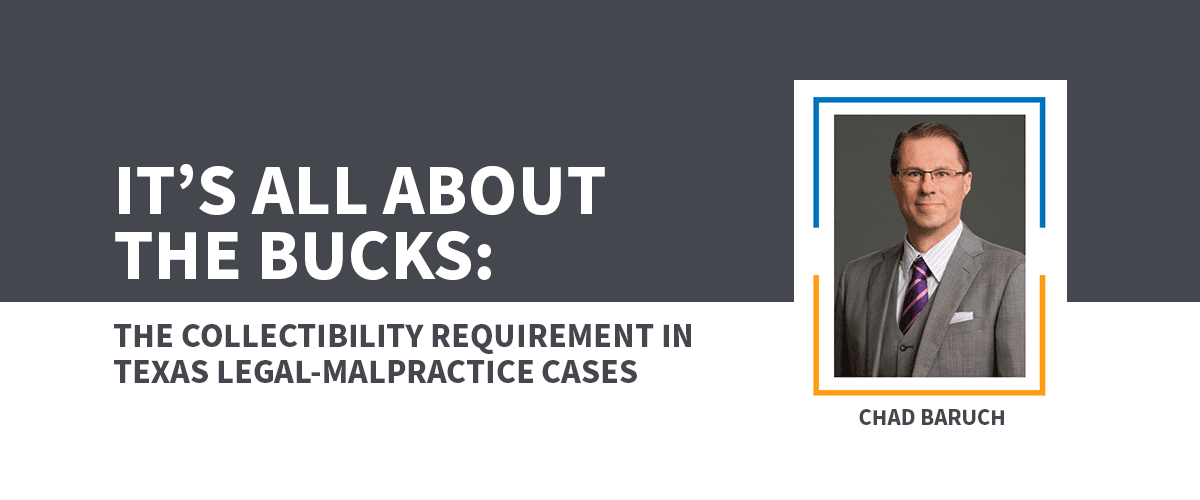 In a previous post, I wrote about the elements of a claim for legal malpractice in Texas: the existence of a duty; the lawyer’s breach of that duty; and proximate cause of damages as a result. Actually, though, many legal-malpractice cases engender the additional requirement to prove what is known as collectibility (and, yes, it actually is spelled collectibility in this context).
In a previous post, I wrote about the elements of a claim for legal malpractice in Texas: the existence of a duty; the lawyer’s breach of that duty; and proximate cause of damages as a result. Actually, though, many legal-malpractice cases engender the additional requirement to prove what is known as collectibility (and, yes, it actually is spelled collectibility in this context).
The Texas Supreme Court imposed this requirement in Akin, Gump, Strauss, Hauer & Feld, L.L.P. v. Nat’l Dev. & Research Corp., 299 S.W.3d 106 (Tex. 2009). Essentially, the collectibility requirement means that a legal-malpractice plaintiff who claims that the lawyer’s breach of duty resulted in the loss of a claim must prove that claim was not only winnable but also collectible.
This requirement is best understood through two simple examples. Assume that a lawyer misses the statute of limitations to file a car-wreck lawsuit for a client. The client then sues the lawyer for costing her the ability to pursue that claim. But if the defendant had no insurance, no money, and no non-exempt assets, the client never could have collected on the claim anyway—the lawyer’s negligence did not actually cost the client any money. The same would be true where a lawyer’s negligence causes a commercial client to lose a lawsuit against another company. If that other company had no insurance, money, or non-exempt assets, the lawyer’s mistake did not cost the client any money.
The collectibility requirement recognizes that a lost opportunity only matters where it costs the client actual money. As Gordon Gecko famously put it: “It’s all about the bucks, kid.” Wall Street (20th Century Fox 1987). The requirement also ensures that a legal-malpractice plaintiff cannot recover more from the lawyer than it could have recovered in the underlying litigation.
One final note: Collectibility means proving the claim was collectible from the person or entity liable to pay it. So, in Akin, Gump, the Court held that evidence showing the defendant in the underlying lawsuit “owned numerous subsidiaries with hundreds of millions of dollars” in assets did not prove the defendant could have paid a judgment. Akin, Gump, 299 S.W.3d at 115, 118. For collectibility purposes, a corporation’s ownership of a second entity does not affect that “second entity’s existence as a distinct, separate entity.” Id. at 116 (citations omitted). And the plaintiff must prove collectibility of the judgment from the entity liable to pay it. See id. at 112.
